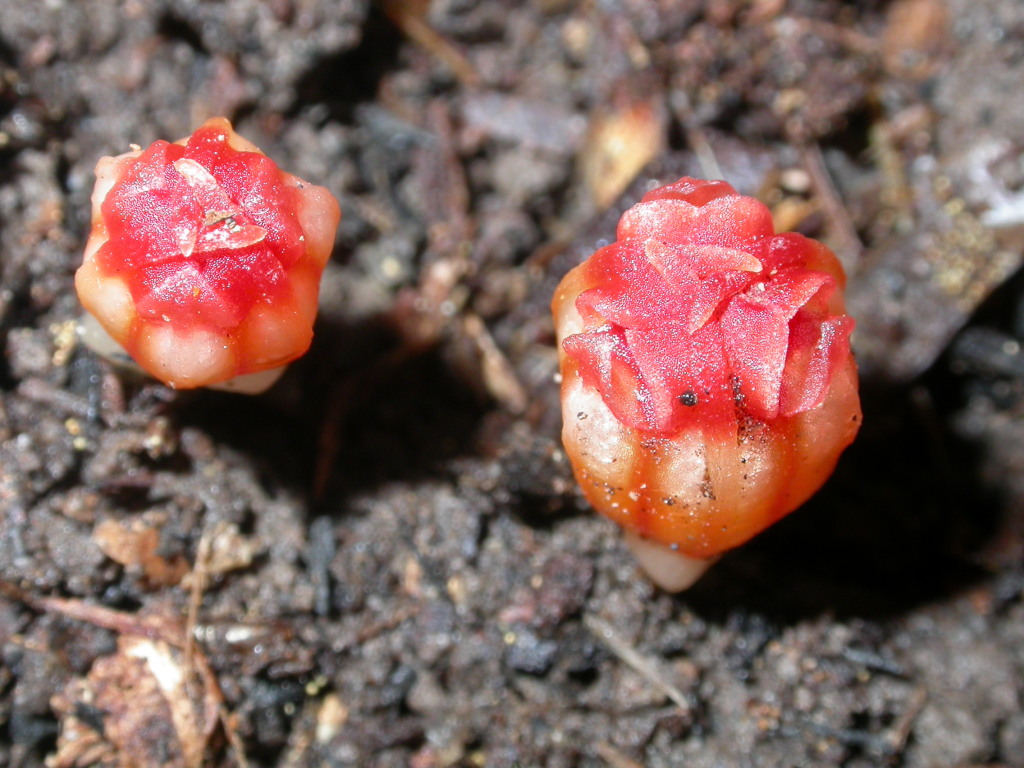Thismiaceae
Small, often subterranean, saprophytic herbs, annual or perennial, often with rhizomes or tubers present. Leaves alternate, usually colourless to yellowish or reddish and reduced to scales (hence, plant appearing leafless), sometimes green, simple, narrow and clustered at base of stem. Inflorescence terminal, cymose or racemose, may be reduced to 1 flower (in Victoria). Flowers bisexual, regular or sometimes irregular; perianth tubular or campanulate, tube sometimes 3-angled or 3-winged, 3(or 6)-lobed with lobes in 2 whorls, lobes often with long slender appendages; outer perianth lobes usually larger than inner lobes or inner lobes absent; stamens 6 or often 3, fused to the perianth-tube, when only 3 stamens present these arranged opposite inner perianth-lobes, sometimes joined by their anthers to form a tube around the style; carpels 3, united; ovary inferior, with 1 or 3 locules, ovules very numerous, small. Fruit a capsule, often winged, circumscissile or opening irregularly, or sometimes opening by valves; seeds numerous, small, with almost no endosperm.
20 genera with c. 130 species, mainly in tropical regions; 2 genera and 3 species in Australia, with only Thismia rodwayi occurring in Victoria.
This account is based largely on Moore & Edgar (1970) and Willis (1970).
Conn, B.J. (1994). Burmanniaceae. In: Walsh, N.G.; Entwisle, T.J., Flora of Victoria Vol. 2, Ferns and Allied Plants, Conifers and Monocotyledons, pp. 738–739. Inkata Press, Melbourne.
 Spinning
Spinning